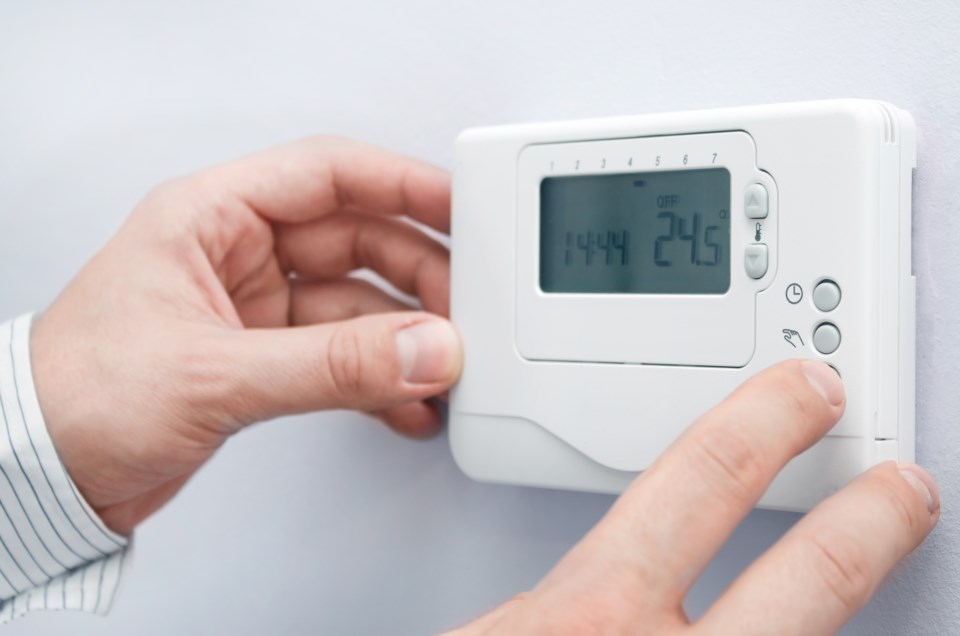Residents of Vancouver, B.C., are being called on to report air temperatures inside their homes and how they are struggling to stay cool this summer.
The survey, prepared by the City of Vancouver, Vancouver Coastal Health and the BC Centre for Disease Control, is meant to help authorities assess how many people suffering in extreme heat conditions struggle to access public cooling spaces.
“Heat has dangerous effects on human health, particularly for vulnerable populations who are exposed to sustained high temperatures without access to effective cooling options,” a City of Vancouver press release read Monday.
The city says respondents should measure the temperature in late afternoon or evening on a hot day. They can use use a digital thermostat on their wall, a food thermometer, or a freestanding device, according to the city. The online survey takes roughly six minutes and will be available until Sept. 10.
Almost 6,000 people have filled out the survey since it was launched in 2021 shortly after a record heat wave killed 619 people across B.C., 98 per cent of which died indoors. So far, the surveys have found accessing cooling places outside the home remains vital for many residents, and that a number of barriers stand in the way of people staying cool during dangerous periods of hot weather.
Indoor temperatures between 26 and 31 degrees Celsius can be dangerous for some people. Health officials warn that when temperatures climb beyond 31 C, people should start seeking an air-conditioned space.
How B.C. heat warnings work
Preparing for extreme heat starts with understanding what extreme weather is coming. How that's communicated changed last year, when authorities integrated the BC Heat Alert and Response System (HARS) with Environment Canada’s three-tiered extreme weather alert system.
Now, early season hot weather may initiate a special weather statement, meant to alert people to early season high temperatures, which can shock the human body in ways not seen later in the summer when people have had time to acclimatize.
If temperatures continue to go up, Environment and Climate Change Canada may issue a heat warning due to “very hot weather.” This second stage is rolled out when daytime highs and overnight lows hit regional thresholds for at least two days.
Across B.C., the regional temperature thresholds are:
- Lower Mainland, Vancouver Island: daytime high of 29 C, nighttime low of 16 C
- Fraser Valley: daytime high of 33 C, nighttime low of 17 C
- Southeast (including the southern Okanagan): daytime high of 35 C, nighttime low of 18 C
- Northeast: daytime high of 29 C, nighttime low of 14 C
- Northwest: daytime high of 28 C, nighttime low of 13
Expected three times every summer, heat warnings are expected to lead to small increases in emergency room visits, hospitalizations and excess deaths. It also triggers a B.C. HARS heat warning response but may be confined to relatively small geographic areas of the province.
An extreme heat emergency — a third tier response equivalent to the 2021 heat wave — may be issued when the above thresholds are met and are expected to significantly increase every day for at least three days straight. These emergencies could lead officials to broadcast a warning through the national text alert readiness system, radio and television.
Such conditions are expected to hit a large part of the province and lead to large increases in emergency room visits, hospitalizations and deaths.
Current modelling suggests they will occur one to two times per decade, though beyond 2050, those estimates are expected to climb as human-caused climate change makes extreme weather more common and more intense.
What to do when it gets too hot
Health officials suggest preparing early before extreme heat hits.
First, assess the risk you and the people around you face. People most vulnerable to heat include those over 60, who live alone, with a mental illness like schizophrenia, with preexisting health conditions, disabilities, with substance use disorders, as well as anyone who doesn’t have adequate housing. Young children, as well as people who are pregnant or who work in a hot place are also particularly susceptible to heat.
if you know a person who is vulnerable to extreme heat, check in on them at least a couple of times a day, especially in the evening as temperatures remain elevated indoors, say health officials.
Officials also say it's important to recognize what heat illness looks like. Some symptoms of heat illness to look out for include headaches, dizziness, heavy sweating, muscle cramps, and extreme thirst or dark urine. The onset of heat exhaustion may make you feel disorientated or confused, and even escalate to an altered state of consciousness.
Anyone who starts feeling too warm should immediately take action to cool down. That could mean finding a cooler room, spraying yourself with a water bottle or putting on a damp T-shirt. Other options include sitting with your feet in water, or taking a cold shower — anything to draw the heat out of the body.
It's extremely important to stay hydrated. Wearing light-coloured clothing, finding shade and not exerting yourself, especially during the hottest hours of the day, also helps.





